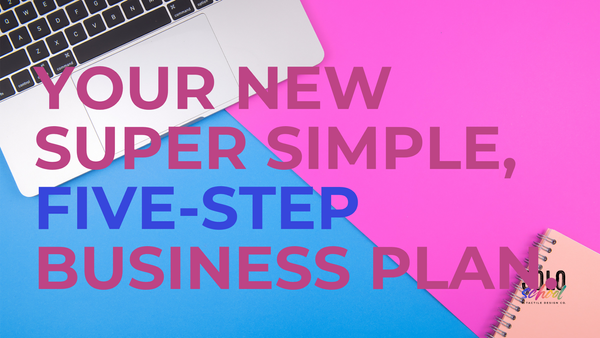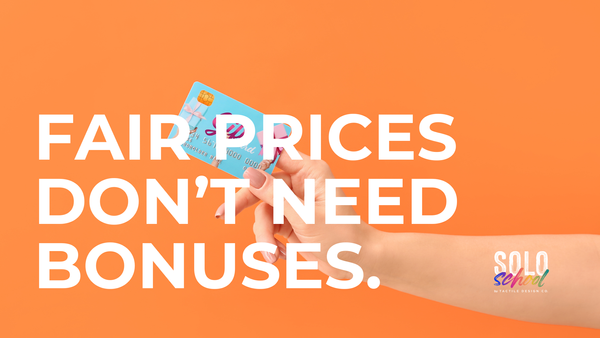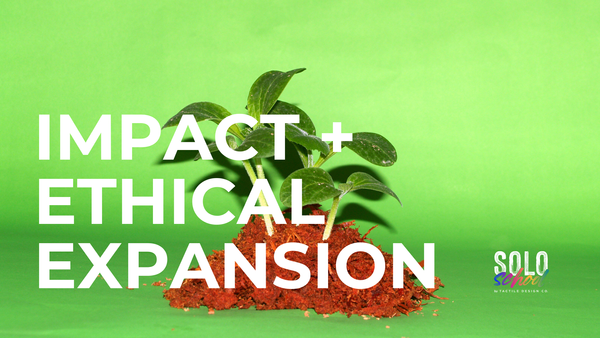So, you have an idea. You want to sell something, or do something for money, or maybe help a specific group of people or solve a problem.
Cool!
Now what?
The Ideation stage is the very beginning of a business. It's where we turn "I think I want to ... " into a solid plan for an MVP with a price, a package, a person, and a promotional plan.
How do we do this?
In Solo School, we teach this in five steps:
- Skills and solution design
- Niche and market design
- MVP initial offer design
- Equitable pricing design
- Production design
By breaking it down into these steps, we gain an understanding of:
- The skills and solutions you have easy access to, and the unique combination of those skills, experiences, and solutions that can form your USP and value proposition.
- The niches you have the most access to, that will find your products or services valuable, so that you can get off the ground quickly while selling to those who want you most.
- The other niches you can move to, after that one gets boring, that are related enough to not be "starting over" but different enough to keep you interested and engaged in your business.
- Your Initial Offer, which for most people should be a strategic direction or base-level of something. Think a sample pack or trial pack, a strategy session, an assessment or audit, a plan, etc. Selling this first increases the likelihood of repeat purchases while decreasing the initial product development load.
- What an equitable price looks like for your product or service. An equitable price is a price that is just as accessible to your clients and customers as it is supportive to your needs. To understand an equitable price, you have to understand your financial needs (including business costs), your capacity constraints, and the 10x rule of ROI to understand if your clients or customers will be able to afford it.
- How you're going to produce your product or support the delivery of your service. Once we know your messaging and your target audience and your offer structure and your pricing, the only thing left (before selling) is to make sure you can deliver with confidence. This means mapping out how you'll deliver the product or service.
This gets all of your major thinking and planning out of the way in as little as a week, meaning you're ready to begin making connections, prospecting, and potentially selling your product quickly with minimal confusion.
Perhaps most importantly, it has you making all of the critical decisions of early-stage business without getting caught in an endless loop of planning, research, and analysis.
Here's how we do it:
Determining Your Skills
Trying to figure out which of your skills you should incorporate into your business can feel a lot like trying to figure out which of your outfits you should wear to a function. The answer to "what am I good at that people will pay for" is basically an entire complex series of further questions. For most people, this becomes a long, drawn out conversation ending in "it depends."
Instead of trying to conclusively answer a question with totally subjective, variable inputs, we like to add some objectivity to the process.
First, brain dump out every possible skill you can use to either provide services or make products. Everything from weird party tricks to things from your past job descriptions and invoice line items.
Once you've dumped it all out on paper, now we need to add some objective data points to the mix. In our case, we prefer to rank each skill based on three criteria with a scale of 1-10. The criteria are:
- Proficiency - how good are you at that thing?
- Desire - how much do you enjoy doing that thing?
- Value - how much do people pay for that thing?
(Inside Solo School, we have specific tools and scales for you to use for this.)
The goal is to figure out which 3-5 skills you have that rank the highest for these criteria, allowing you to build a business that is a unique combination of things that you are good at, enjoy, and people find valuable.
Picking Your Niches
We don't like picking a niche around here. It's so hard to just decide that you're going to help that one group of people forever, and that's it. Nevermind that every time we've tried, it either hasn't panned out or we get bored really quickly.
So instead, we do to our target audiences what we did with our skills.
We brain dump out every possible type of person we could work with, and then we rate them based on three criteria with a scale of 1-10. The criteria are:
- Access - how many of these people do you actually know, or could easily access?
- Desire - how much do you enjoy working with these people?
- Value - how much value can these people get from your skills?
Again, our goal here is to put objective data points on subjective things, so we want to identify the top 3-5 niches and target markets you could work with that you have access to and want to work with, who will get value from your work with them.
You can choose to work with one first and then progress through the list, or combine multiple niches together into a specific problem that you solve for multiple overlapping groups.
(Yes, we have tools and scales and guides for this within Solo School, too.)
Building Your MVP Initial Offer
While going to market with a fully prepared, perfect, and stunningly designed product sounds ideal... In practice, people who do that often end up with a perfect product that sits on the shelf.
We want to collaborate with your ideal clients and customers to build the ideal product or service, so we're going to start with a simple MVP.
What is the MVP?
Minimum Viable Product.
This doesn't mean sloppy, or lazy, or hastily pulled together, or "bad", it just means the minimum value you can pull together to achieve the goals of your offer.
In Solo School, we like to design a specific kind of MVP. We want your initial offer to be something that:
- Is an easy "yes" (low barrier to entry, low commitment, high reward)
- Automatically leads to future purchases in a natural, ethical way
- Can be delivered quickly during the validation stage of your business
For services, this is easy. It's a planning session or package. How can you build a custom strategy for your client? Is there something you need to assess or audit before you can work together? We're basically building a paid discovery / consultation process for your services here, and clients love it.
For products, we want to focus on an expandable base product. What can you sell today that is either consumable and can be crafted in different variants in the future (size, colour, shape, flavour, finish, etc.) OR is non-consumable but can be either added on to (think upgrades and accessories) or collected (for future editions?)
The goal is to create something that you can create and sell easily, TODAY, that will lead to repeat sales from your clients and customers tomorrow.
Calculating Your Equitable Pricing
We know what skills you bring to the table, who we are selling to, what we're selling first... And now we have to figure out how to price it.
There are many, many schools of thought around pricing, but in Solo School, we focus on a few key details:
- Does this price support my revenue needs so that my business is sustainable and profitable?
- Is this price accessible to my ideal clients or customers in a meaningful way, based on their potential value received?
- Does this price achieve these two things in reasonably equal measure?
The equal part is one of the things that sets our pricing strategies apart.
An equitable price is not just a price that is accessible to anyone who wants to purchase your goods or services...
... and it is not just a price that supports your profitability.
An equitable price is a price that is accessible to your ideal clients AND proftable and sustainable for you.
Because a business that customers can't afford to support will collapse just as quickly as one that can't afford to support itself.
To determine your equitable price, we need to look at your production capacity (how many clients you can serve simultaneously, OR, how many goods you can manufacture), how much you can realistically work with your constraints, and your revenue needs.
(Making sure to account for at least 50% of our time being spent on admin, marketing, sales, and other activities that are not directly revenue generating.)
Then we know how much you need to make per client and per hour for your business to be sustainable.
From there, we look at your client's financial position. Where does this price fall in comparison to your competition? Can your customers get 10x value or 10x ROI on this investment in many, if not most, cases?
If the price is above the range of your competitors or a 10x value return would not be feasible for your clients or customers, we revisit your goals or your target audience.
If the price is below the range of your competitors or a 10x value return is essentially guaranteed, we revisit your assumptions about sustainability.
But if this price is within the range of your competitors and a 10x value return can be reasonably expected in many cases, the price is equitable.
It can equally support your business and sustainability, while providing a reasonable expectation of value and market fairness to your clients.
Create a System to Produce and Deliver
You know what you're doing, you know who is buying, you know what you're selling, and you know how to price it.
All that's left to determine (before we start marketing!) is to figure out how you're going to deliver.
While many parts of this process can't be predicted or accounted for until you're actually in the field, doing the work, it's helpful here to map out the basic production process and customer journey for your MVP.
In Solo School, we look at key components where neurodivergent people get tripped up, and add in elements that make delivery more accessible like:
- Doing work live, with the client, rather than using deadlines and adrenaline to grind through (or miss!)
- Using group options to minimize face time for those who fatigue easily due to masking on calls
- Pre-planning and even pre-scheduling and templatizing communication, so those who have object permanence struggles with clients don't "ghost" accidentally
- Production processes that consider task switching and transitions, monotropic or polytropic focus, etc.
- Not giving specific client-facing time estimates for tasks, due to time blindness and executive functioning struggles
- And more
All of this gets mapped out in a handy flow chart that tracks your clients and customers from "I'm ready to purchase, what now?" through to "this was great, thanks!" and beyond.
What Happens Next
Once you have mapped out your skills, niches, MVP, pricing, and production process, it's time to sell things. You know who and what and how much, and should feel comfortable knowing "what happens after this" to reduce the anxiety that comes with selling something new.
This means you move on to the Validation stage of your business, with a goal of connecting to customers, doing market research, and making your first five sales to validate all of the work we've done so far.
Sometimes, businesses can go back and forth between these two stages before truly validating their model and being ready to move on. That is expected, and normal. You don't know what you don't know and not everything is a home run on your first "at bat"!
Wish You Had Someone to Walk You Through It?
Sometimes, we just need someone who has been there, done that, and already cut the obnoxious tag out of the tee-shirt to help us through.
That's why Solo School exists - to support people just like you in becoming successful founders and entrepreneurs, working with your natural tendencies instead of against them.
You can learn more about Solo School here.
If you're not looking for or ready for the additional support, watch for next week's article on the validation stage to learn how we take students through getting their first five sales - by hand - to validate their new model with actual revenue before moving into systems and expansion.




